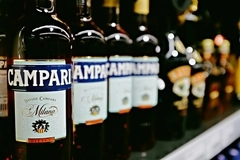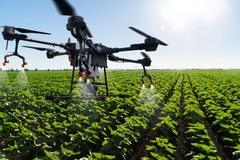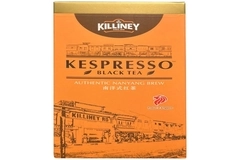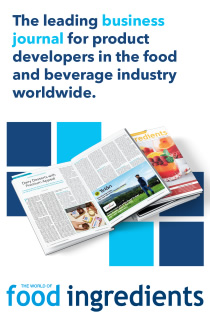H2Plus leverages electron-based tech to strip PFAS from beer without filters

Water technology start-up H2Plus has developed a gas-based method for destroying Per- and polyfluoroalkyl substances (PFAS), or “forever chemicals” in water, which it says is applicable to beer. The method aims to bridge the gap for “real PFAS destruction” in beer beyond traditional filtration to offer manufacturers a scalable solution to eliminate contaminants without compromising taste, clarity, or product integrity.
Last month, a study stated that PFAS has made its way into US beer, with scientists identifying it in 95% of the samples tested, sparking serious health concerns. The chemicals have been linked to cancer, liver disease, and immune suppression.
“The idea to explore beer applications came after proving our system in harsh water conditions like landfill leachate and realizing the same process could work under the gentler conditions required for consumables,” chief marketing officer Aaron Ellis tells Food Ingredients First.
“We use a gas-based process that generates reactive electrons in water. These electrons target and break the carbon-fluorine bonds that make PFAS so persistent. Because our system does not rely on filters, chemicals, or heat, it is well-suited to sensitive environments like brewing.”
For beer, the system can be integrated into the production line “without altering the taste, clarity, or safety of the final product,” and requires no additional chemicals.
Breweries can run their beer through H2Plus’s mobile system at the end of their process, with a simple “plug-and-play” method that can handle large volumes per day.
Unlocking the science of PFAS destruction
Ellis says breaking down PFAS requires severing the carbon-fluorine bond, one of the strongest in organic chemistry.
 The H2Plus team saw a gap in the market for real PFAS destruction beyond traditional filtration, says Ellis.“Our system injects a gas into water, forming fine bubbles. These bubbles rise through the liquid and attract PFAS molecules due to the gas-liquid interface. As the bubbles rise, we apply a low-voltage electric charge, creating reactive hydrated electrons at the interface,” he explains.
The H2Plus team saw a gap in the market for real PFAS destruction beyond traditional filtration, says Ellis.“Our system injects a gas into water, forming fine bubbles. These bubbles rise through the liquid and attract PFAS molecules due to the gas-liquid interface. As the bubbles rise, we apply a low-voltage electric charge, creating reactive hydrated electrons at the interface,” he explains.
The electrons further break the carbon-fluorine bonds on contact. The process is highly specific to PFAS and occurs instantly, which is why it does not interfere with other compounds found in beverages like beer.
“Because it operates under ambient conditions, without pressure, heat, or harsh chemicals, the system does not alter proteins, sugars, or other molecules responsible for flavor and clarity. That makes it viable for beer and other sensitive liquid products like juices, dairy, or bottled water.”
“You can drink straight from the water that comes out of our filtration.”
Overcoming conventional process limitations
Colorado-based H2Plus’ electron-based process offers some benefits over other PFAS removal methods such as reverse osmosis, granular activated carbon, or ion exchange, which remove PFAS from water but generate concentrated waste streams that must be incinerated, stored, or landfilled, Ellis shares.
“That means PFAS is still circulating, just in a different form.”
H2Plus breaks PFAS apart entirely using a “one-step, ambient-temperature process.” It operates at low energy and requires no chemical additives or pre-filtration, leading to minimal environmental impact.
“The system also avoids the need for consumables that must be replaced regularly. This lowers operational costs and prevents secondary waste. Additionally, because the reaction happens in fractions of a second and targets the PFAS molecules directly, the system is efficient even at low concentrations.”
Targeting regulatory compliance
For Ellis, transparency and testing are essential in driving the acceptance of H2Plus’ “modular and energy-efficient” technology in F&B applications. This includes regulatory considerations around food safety, including material certifications, contaminant control, and efficacy validation.
 Breweries can run beer through H2Plus’s mobile system at the end of their process, through a simple plug-and-play method (Image credit: H2Plus).“To overcome the regulatory hurdle, we would need to go through appropriate third-party validation, ensure compliance with National Sanitation Foundation (NSF) and FDA standards, and build partnerships with beverage companies for pilot testing.”
Breweries can run beer through H2Plus’s mobile system at the end of their process, through a simple plug-and-play method (Image credit: H2Plus).“To overcome the regulatory hurdle, we would need to go through appropriate third-party validation, ensure compliance with National Sanitation Foundation (NSF) and FDA standards, and build partnerships with beverage companies for pilot testing.”
The company is aligning with NSF International guidance and US Environmental Protection Agency (EPA) recommendations around PFAS treatment. For F&B use, the system would also need to comply with FDA standards for food-grade components.
“The contact materials in our pilot systems include 316-liter stainless steel and seals made from PFAS-free elastomers. We are also designing the system to support clean-in-place protocols, so it can be integrated into beverage facilities without disrupting sanitation workflows,” he adds.
A “major industry liability”
Ellis calls PFAS a “major liability in the F&B industry,” showing up in everything from processing equipment to packaging. “With its widespread use and persistence, eliminating PFAS has become both a health and brand trust imperative for the sector.”
According to scientists, low consumer awareness of PFAS health risks in food packaging is also a concern, since the chemicals migrate from packaging to food.
However, consumer awareness is rising, and major producers have faced lawsuits over PFAS-laced materials, notes Ellis.
The EPA has also sprung into action, with an upcoming regulation that requires PFAS manufacturers to report their use from 2011-2022 in a public database by October 13, 2026.
As PFAS regulations evolve, he expects the pressure to address these contaminants will increase in the future.
“We believe that destruction, not just filtration, will become the preferred approach. Our role is to offer a reliable, scalable technology that works with existing infrastructure and does not compromise product integrity.”
“If producers can eliminate PFAS while maintaining taste and safety, it will give them a long-term, sustainable path forward,” he concludes.

















